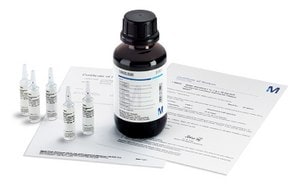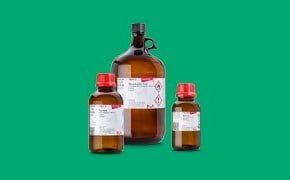食品和饮料测试的化学分析

对食品和饮料进行化学分析是为了确保食用安全、产品质量和产品完整性。化学分析是保障食品标签正确、保护消费者免受掺假、食品商标错误和饮料不安全影响的前提条件。要实现这些目标,必须采取综合措施,包括制定适当的食品立法、加强食品管理部门的控制、食品安全机构和大学开展持续研究以提高食品和食品加工方面的知识,以及增强食品行业的责任感。
特色类别
由于产品进入市场的复杂性,这种综合监测方法在食品和饮料行业尤为重要。例如,加工肉类的污染可能来自生产过程,但也可能来自动物饲料,甚至是饲料生长的土壤。
因此,食品和饮料行业的分析测试也扩展到环境测试(如土壤和水质、空气监测)。
包装食品和饮料的营养数据
包装食品上的营养数据对于帮助客户根据饮食需求做出明智决策或控制饮食相关疾病非常必要。因此,标签法规对食品包装上的营养标签(营养成分、数量和热量值)提出了详细要求。生产商对碳水化合物(糖、糖类)、膳食纤维、有机酸、糖醇、脂肪(脂肪酸、FAMES、甘油酯)、蛋白质(氨基酸、肽)、钠、维生素和矿物质等营养成分进行额外的食品检测,对于营养成分声明的一致性至关重要。
食品和饮料安全的污染测试
化学食品安全分析可使人们安全消费不含过敏原、有害农药残留、重金属、霉菌毒素和兽药残留的产品。与此同时,政府监管机构也在不断审查这些进步的长期影响,例如为确保作物产量而增加杀虫剂的使用,以确保它们不会对人体造成危害。
食品掺假和不当标示的分析检测
食品真实性检测通过保护客户免受食品掺假和不当标示之害,确保食品的完整性。分析方法用于检测改变或掩盖特性的成分替代或非法化学添加。
相关文章
- This article explores the analysis of fats in food and beverage products. From derivatization of fatty acids to FAMEs, to analysis of FAME isomers, and more we are your one-stop shop for all of your food and beverage analysis needs.
- Recent advances in analytical tech for heavy metal detection ensure food safety, with products and services supporting trust in consumption.
- 鱼油胶囊和鲑鱼中ω-3脂肪酸的色谱分析,重点是通过使用两种不同选择性的GC色谱柱为分析师提供期望的验证性分析。
- 分步操作说明:将各种蔬菜中的硝酸盐还原为亚硝酸盐后,配合格里斯试剂使用Reflectoquant®测试试剂盒和反射计通过反射法测定含量。
- 一种易于使用、经济且基于只能手机的测量牛奶和奶制品pH的方法,此方法使用 MQuant® pH 测试试纸条和 MQuant® StripScan 应用程序。
- 查看全部 (73)
相关协议
- Explore how GC can be used to analyze fatty acids either as free fatty acids or as fatty acid methyl esters.
- GC Analyses of FAMEs by Boiling Point Elution
- 分步操作说明:使用Spectroquant®试纸条和反射计通过反射法测定软饮料中的蔗糖含量,非常适合过程控制和现场测试使用。
- 萃取化后采用格里斯法进行光度测定
- Spectrophotometric determination of proline by the Ninhydrin method, per EN 1141 and German Food and Feed Code §64 LFBG 31.00-7.
- 查看全部 (19)
查找更多文章和协议
相关资源
- Application Note: Determination of 8 Aminoglycosides in Pork Meat acc. to GB/T 21323-2007
Following the GB/T 21323-2007 method, an LC-MS/MS (ESI positive mode) method was developed to determine 8 aminoglycoside residues of spectinomycin, hygromycin B, dihydrostreptomycin, amikacin, kanamycin, tobramycin, gentamicin and neomycin in pork meat.
- Application Note: Determination of Glyphosate, Glufosinate, and AMPA in Green Tea by LC-MS/MS with QuEChERS Cleanup
A QuEChERS-liquid chromatography-tandem mass spectrometry (LC-MS/MS) method was established for the determination of glyphosate, glufosinate, and AMPA in green tea.
我们能提供哪些帮助
如有任何问题,请提交客户支持请求
或与我们的客户服务团队联系:
发送电子邮件custserv@sial.com
或致电 +1 (800) 244-1173
额外支持
- Chromatogram Search
Use the Chromatogram Search to identify unknown compounds in your sample.
- 计算器与应用_缓冲液计算器_HPLC方法转换计算器-默克生命科学
默克该工具箱包括用于化学、生命科学、材料科学等方面的科学研究工具和资源。
- Customer Support Request
Customer support including help with orders, products, accounts, and website technical issues.
- FAQ
Explore our Frequently Asked Questions for answers to commonly asked questions about our products and services.
如要继续阅读,请登录或创建帐户。
暂无帐户?



